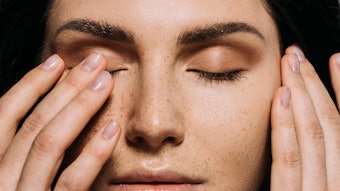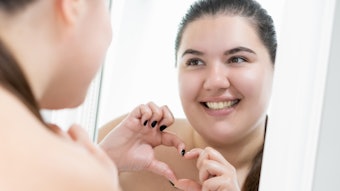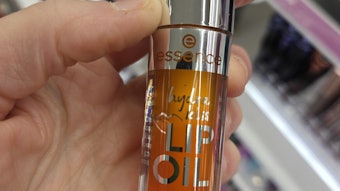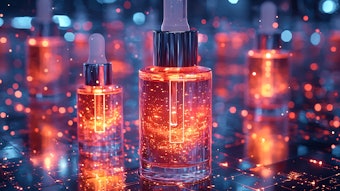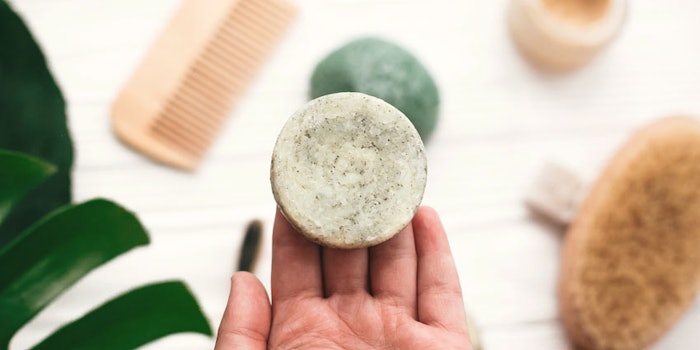
While water appears plentiful, it is suggested that of the available 3% percent of fresh water on Earth, only 0.4% is available for use as the rest is tied up in glaciers, snow packs and ice caps. And, if significant changes in water consumption are not made, two-thirds of the world may be facing water stress by the year 2025.1
Many areas have already faced dangerous drought conditions, such as those that contributed to devastating wildfires in California in 2018. Also in 2018, Cape Town, South Africa was facing a significant water shortage that could have completely shut off the taps. Residents were forced to resort to matters such as reusing shower water and limiting the number of times toilets were flushed.2 As a result of this the historic shortage, the Proctor & Gamble company launched a hair care brand called “Waterl
The mass population must make substantial changes to behaviors in order to preserve the integrity of the water supply. Many cosmetics contain high concentrations of water because it is a great solvent and inexpensive. However, many formulators are reconsidering the compositions of cosmetics and personal care products, placing greater emphasis on sustainable, green and clean products. Not only do anhydrous formulations conserve water, they allow for significantly less plastic packing. In fact, it is estimated that only 9% of all plastics produced are recycled, with most ending up in landfills and polluting oceans, causing harm to birds, marine mammals and fish.4
Other issues can hamper efforts of conscientious consumers who are recycling. China once took in most of the United States’ recycling to turn into new goods but recent bans on the types of solid waste permitted into China are causing significant impacts, and some municipalities have been forced to incinerate. Non-recyclable items tossed in recycle bins require complex sorting and can cause issues with processing equipment.5
The case for waterless and minimally packaged products is clear. Some historical formulation types are being revived and redesigned. Products like soap bars can be packaged in recyclable paperboard or sold as individual loose bars, sans packaging. Cosmetic brand LUSH sells shampoo bars, solid conditioners, soaps, scrubs and massage bars minus packaging, or “naked” as they call it.
The following is a review of trending waterless or reduced-water product development, offered for your consideration.
Bar Soaps
Soap is one of the oldest known cosmetics. The first recorded mention of soap was ancient Sumerian tablets. Soap is simply the alkali salt of fatty acids that has cleaning, lathering and surfactant properties. Presumably due to such a long history of known safety, the U.S. Food and Drug Administration (FDA) has exempted soaps that meet this definition from regulation as a cosmetic.
Animal-derived fats like tallow and lard were the earliest sources of triglycerides for saponification. In fact, the first commercial soap manufacturers in the United States were in cities with thriving meat packing industries, such as The Proctor & Gamble company in Cincinnati, OH; and The Armour Soap Works in Chicago, IL, which became The Dial Corporation and later, Henkel North American Consumer Goods.6
The introduction of Jergens Body Shampoo in the 1990s was considered a major innovation. Soon, a dramatic shift from bars to liquid soaps and cleansers occurred because they were more convenient and less of a mess to deal with;7 e.g., when left in a wet soap dish, soap bars would absorb water, producing a gelatinous “soap mush” film. While the mush was easily removed with the next use, it was unpleasant and increased the bar wear rate.
Syndet and Combo Bars
Body washes often are comprised of 80% or more water and they are packaged in plastics. This presents an opportunity for soaps—or more common today, synthetic detergent (syndet) and combo bars. Traditional soaps pose the disadvantage of a high pH, which disrupts the skins acid mantle. In addition, as mentioned, it can form soap scum that precipitates on bath and shower surfaces in the presence of hard water. Synthetic surfactants do not present these drawbacks, which makes them a more popular choice today.
Synthetic surfactants also can be blended with conventional soaps, referred to as combo or combi bars. The pH of pure soap-free syndet bars is in the range of 5 to 7, which makes them much more “skin-friendly.” Common synthetic surfactants used in syndet bars are sodium cocyl isethionate and sodium lauryl sarcosinate. These are blended with plasticizers, binders, emollients and fillers, along with other aesthetic-enhancing ingredients to create syndet bars.
Today, a variety of preformulated syndet, or combo noodles, are available from suppliers who have considerable expertise in syndet production. This allows formulators to create premium bars with less time spent on product development.
Shampoo and Shampoo/Conditioner Bars
Waterless cleansing products are also developed for hair care, although one disadvantage to a shampoo bar is the drying feel it can leave. With the addition of superfatting agents, however, some conditioning properties can be added.
Fats and oils such as palm oil, olive oil and cocoa butter has long been known as superfatting agents in soap making. On the other hand, such agents can plasticize the bar, leading to increased bar wear rate and mushing.8 Moisture content and hardening agents can be added to combat these effects. As such, popular oils like argan and jojoba are making their way into shampoo/conditioner bars. Better conditioning can be achieved through the addition of ingredients such as behentrimonium methosulfate and cationic guar gums.
Powder Facial Cleansers
Amino acid-based glutamates are supplied as dry powders, are very mild and are highly biodegradable. While they can be used on their own to create powder cleansers that foam well when applied to the skin in the presence of water, a creative approach that provides a unique sensory profile is to add sodium bicarbonate and citric acid. The two react once mixed with water to produce vigorous, bubbling foam. Natural oils and butters can be added to enhance skin feel and enhance moisturization.
Amino acid-based glutamates are supplied as dry powders, are very mild and are highly biodegradable.
Dry Shampoo
In her seminal work from 1937, Canitics: The Art and Science of Hair Dyeing, Florence Wall described what she called, “powdered dry cleaners. When introduced to the hair, [these] absorb some of the superficial grease and dirt.”
Today’s concepts are basically the same. Dry shampoo products allow consumers to skip a day or two of hair washing and help to refresh their style. Ingredients such as talc, rice starch and aluminum starch octenylsuccinate are used to absorb sebum from the scalp. Zeolite or cyclodextrin are added to absorb complex odors such as cigarette smoke.
Dry shampoos are typically packaged as powders or aerosol sprays, which are shaken, sprayed into hair and brushed to distribute. Powders should be mixed with a ribbon blender or other suitable equipment to create homogenous blends. For aerosols, the powders are typically dispersed in ethanol prior to filling.
Preserving Waterless Cosmetics
One might think preservatives are not required in anhydrous formulations, but this is not always the case. FDA regulations for an adequately preserved product state that cosmetics need not be sterile—but they also must not be contaminated with pathogenic organisms, and the concentration of non-pathogenic organisms should be low.
Furthermore, cosmetics must be shelf-stable under these conditions and during use by the customer. Each cosmetic therefore must be tested for preservative efficacy under the potential conditions of consumer use. Each cosmetic that is not self-preserving also must be tested for microbial contamination prior to interstate shipment.9
Consumers can introduce water and microbes into cosmetics, and if the products are not adequately preserved, these microbes will grow. This can result in not only an unpleasant odor and appearance in the product, but serious infections in users. Indeed, one study found counts of > 500 CFU/g of Staphylococcus spp. and Escherichia coli in cosmetic powders and eyeliners, which are typically anhydrous.10 Cases of eye infections from contaminated mascara have been well-documented.11
Water Activity
In waterless cosmetics, an understanding of the chemical and physical requirements for microbial growth can be an effective way to reduce, or in some cases eliminate, preservatives. Water and nutrients are needed for microbes to survive and support population growth. Thus, one approach to preventing microbial growth is to consider a product’s water activity.
Water activity (aw) is defined as the ratio of the vapor pressure of the product compared to the vapor pressure of pure water. The scale of water activity runs from pure water at 1.00, to completely devoid of water at 0.00. Microbial growth occurs preferably at water activity levels above 0.90; but there are some osmotolerant organisms that can survive water activity as low as 0.60.
Dry powders typically have low water activity but products can be exposed to moisture—especially since many cosmetics are stored in bathrooms, where conditions can get warm and humid. Also, other debris and contaminants from the skin can get into the product during use, especially if the fingers or an infrequently cleaned applicator is being used.
Lipsticks and lip glosses are two other examples where consumer use can introduce moisture and influence the measurement of water activity. Testing should be performed along with consumer use to gather more information on the potential need for preservatives in anhydrous cosmetics.12
Conclusions
As concerns about the state of our environment continue to mount, there are many opportunities to formulate water-free products by looking back at historical techniques and incorporating modern technologies. From cleansing balms to solid foundation sticks, the number of anhydrous products on the market continues to grow, as does the opportunity for innovation.
One important to keep in mind, however, is the following caveat when formulating: just because a product is anhydrous does not mean it does not need preservation.
